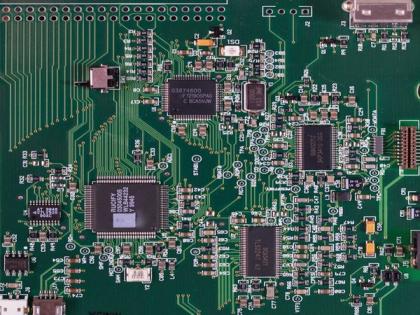Global MNCs are looking for JVs in India's semiconductor sector: Yes Securities
By ANI | Updated: September 5, 2025 14:05 IST2025-09-05T14:02:45+5:302025-09-05T14:05:07+5:30
New Delhi [India], September 5 :Multinational companies from around the world are showing increasing interest in partnering with local ...

Global MNCs are looking for JVs in India's semiconductor sector: Yes Securities
New Delhi [India], September 5 :Multinational companies from around the world are showing increasing interest in partnering with local firms through joint ventures (JV) to begin operations in India's semiconductor industry, according to a report by Yes Securities, a subsidiary of Yes Bank, following its visit to Semicon India 2025.
"Companies like Kaynes have already started to work on advance packaging and there is also significant interest from MNC companies to scout of JV partners in India," the report added.
"Our visit to the SEMICON India 2025 has revealed a clear focus of the government on building supply chain for manufacturing for semiconductors and increasing the value addition," the report further added.
The report projects that India's domestic semiconductor market is projected to grow at a robust 13 per cent compound annual growth rate (CAGR), reaching USD 100-110 billion by 2030, up from the current USD 45-50 billion.
This surge is expected to be driven by proactive government policies, rising demand for electronics within the country, and increasing global efforts to diversify semiconductor supply chains, the report added.
The government has already laid the foundation for a strong semiconductor ecosystem by offering substantial financial incentives for fabrication (fab), display units, and OSAT (Outsourced Semiconductor Assembly and Test) operations- including assembly, testing, marking, and packaging (ATMP).
Additionally, the Design-Linked Incentive (DLI) scheme to support domestic chip design startups are helping to build capability and promote innovation at the design level.
The upcoming India Semiconductor Mission 2.0 (ISM 2.0) is likely to cover a broader scope of the semiconductor value chain. In collaboration with NITI Aayog and the Ministry of Electronics and IT, industry bodies have identified several high-priority electronic products and the critical chips required to support them over the next five years.
These discussions are leading towards an enhanced incentive structure, which may include Production Linked Incentives (PLI), updated DLI schemes, and alignment with state-level Electronics System Design and Manufacturing (ESDM) policies. The goal is to achieve 30-35 per cent value addition in the semiconductor space, with a clear push towards domestic production of high-impact chips and electronic components.
The report highlighted that apart from semiconductor chips, the government is turning its attention to the electronic components ecosystem, which accounts for nearly 20 per cent of the bill of materials (excluding semiconductors). Currently, most of these components, such as capacitors, resistors, PCBs, and connectors, are imported.
The report added that the DLI Scheme is driving India's chip design ambitions. To date, 23 chip design projects have been sanctioned under the scheme, and 72 companies have been granted access to industry-grade Electronic Design Automation (EDA) tools. With nearly 20 per cent of the world's chip design engineers already based in India, the government is keen to establish the country as a global hub for semiconductor design and IP creation.
The report added that the policy momentum is also expected to benefit companies already invested in semiconductor manufacturing.
Disclaimer: This post has been auto-published from an agency feed without any modifications to the text and has not been reviewed by an editor
Open in app